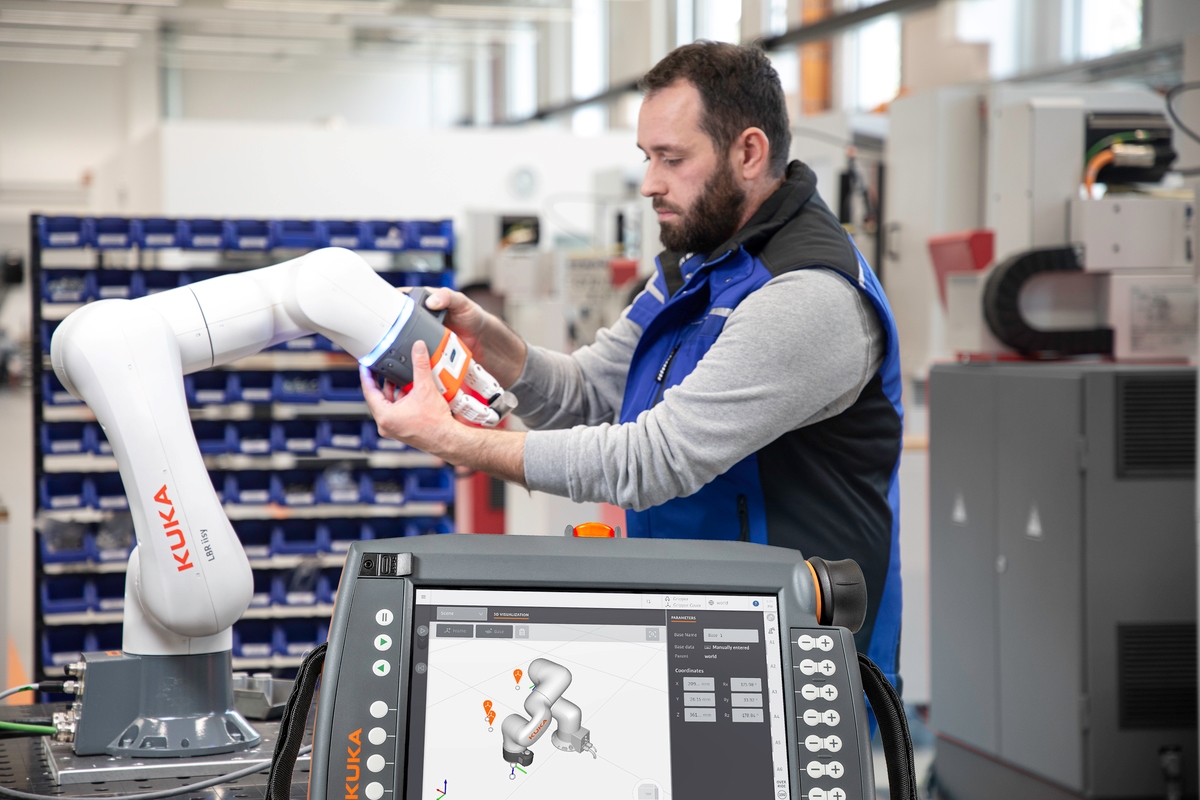
The robotics race
Submitted by:
Sara Waddington
We highlight market forecasts, the latest trends and the speed of adoption for industrial robotics worldwide.
===
Industrial robots are in high demand across a range of different industries (such as automotive; pharmaceuticals; consumer electronics and machinery). Industry 4.0 has accelerated the development of new technologies such as AI-enabled robots and collaborative robots, allowing manufacturers to use robots to simplify various processes, increase productivity and reduce errors. Increased workplace safety and improved production capabilities have further driven industries to invest in robotic systems.
Careers in robotics and automation are growing, well-paying and offer new opportunities for employment. There is a need to boost workforce training, robotics education and career inspiration.
“Robots and automated technologies create jobs that are better paying; safer; greener; more productive and more rewarding than the physical tasks that robots tend to do. For example, new robotics roles pay about 30% more on average than entry-level, non-robotics manufacturing jobs,” commented the Association for Advancing Automation (A3), North America’s largest automation trade association.
The market for industrial robotics
The market for global industrial robotics was valued at US$ 17.5 billion in 2022 and the worldwide industrial robotics’ market size is expected to reach US$ 65.7 billion by 2032, according to a research report published by Spherical Insights & Consulting. The compound annual growth rate (CAGR) of the market is expected to be 14.1% (2022-2032).
“Large, heavy robots are placed in fixed positions in an industrial plant, and all other worker tasks and processes revolve around them. These robots aid in increasing productivity while lowering costs and producing high-quality goods in automation applications. Drives; end-effectors; robotic manipulators; sensors and controls comprise the vast majority of robots. The robotic controller is the robot's brain that aids in command delivery. Sensors, microphones, and cameras are used in robots to keep them aware of their surroundings,” commented the report.
“The COVID-19 pandemic had a significant impact on market growth. Following the outbreak, there has been an increase in demand for automated systems and robots which has created new market opportunities. As robots require little to no human interaction, the risk of virus transmission remained low. In addition, following the unexpected shutdowns caused by the pandemic, industries increased their automation plans for the future, driving the market for industrial robotics,” it added.
Based on type, the global industrial robotics market is segmented into articulated; traditional robots; collaborative robots; cartesian and others. Among these, said the report, the articulated segment is dominating the market with the largest revenue share over the forecast period. Articulated robots are highly adaptable and capable of performing a wide range of tasks. They can be easily reprogrammed and can perform complex movements. As a result, they are suitable for use in a wide range of industries including manufacturing, assembly and logistics.
“The heavy payload segment will witness significant CAGR growth over the forecast period. Growing demand for machines in the agriculture, packaging and manufacturing sectors is expected to drive demand for industrial robots with heavy payloads in the metals and machinery industry during the forecast period,” explained the report.
The ‘electrical & electronics’ segment is expected to hold the largest share of the global industrial robotics market during the forecast period. Robots can perform a variety of tasks with high repeatability (such as dispensing; insertion; labelling and screw driving).
“Innovations, as well as increased R&D efforts by market players to improve productivity, cost-efficiency and low manufacturing expenses, will drive increased the adoption of these industrial robots,” outlined the report.
“The Asia-Pacific region will hold the largest market share over the forecast period. Rising automation (especially in Japan, China and India) is expected to fuel Asia Pacific growth. As the population and disposable income of people increase, so does the demand for consumer goods and other items, resulting in increased production capacity which contributes to the growth of the industry. Similarly, there is a growing demand for customised machinery and automobiles, necessitating precision and rapid production capacity,” it continued.
As consumers become more aware of the benefits of sustainable packaging solutions, the analyst expects the European market to grow significantly. The North American market is also expected to grow significantly as the global industrial robotics market is fuelled by the implementation of smart factories and Industry 4.0, resulting in increased demand for customised and small robotic systems.
Analyst Mordor Intelligence estimates the industrial robotics market size at US$ 42.59 billion in 2024, and expects it to reach US$ 79.87 billion by 2029 (growing at a CAGR of 13.40% from 2024-2029.
“Industrial robots play a crucial role in manufacturing industrial automation, with many core operations in industries being managed by robots. The rising penetration of the IoT and investments in robotics across regions have been major contributors to the market's growth. For instance, the 'Made in China 2025' announcement aimed to broadly upgrade the Chinese industry by moving towards quality-focused and innovation-driven manufacturing,” it explained.
“Some of the major factors driving the market include rising demand for high-quality products (which need proper end-to-end visibility in the manufacturing process), the need for energy conservation and a rising focus on workplace safety. Incremental advances in technology, coupled with a sustained increase in the development of manufacturing facilities, are also expected to drive this market,” it added.
Robotic market trends
“For the past 50 years, the automotive industry has used robots in its assembly lines for various manufacturing processes. Currently, automakers are exploring the use of robotics in more procedures. Robots are more efficient, flexible, accurate and dependable for such production lines. This technology enables the automotive industry to remain one of the most significant robot users and possess one of the most automated supply chains globally,” explained Mordor Intelligence.
“The growing adoption of automation in the automotive manufacturing process and the involvement of AI and digitalisation are the primary factors increasing the demand for industrial robots in the automotive sector. The growing automotive sector worldwide supports the growth of industrial robotics for welding car parts; palletising; part insertion; pick-and-place applications and many other uses,” it added.
“The stock of operational robots around the globe hit a new record of about 3.9 million units. This demand is driven by several exciting technological innovations,” commented the International Federation of Robotics (IFR) earlier this year.
“The five mutually reinforcing automation trends in 2024 show that robotics is a multidisciplinary field where technologies are converging to create intelligent solutions for a wide range of tasks,” said Marina Bill, President of the International Federation of Robotics. “These advances continue to shape the merging industrial and service robotics sectors and the future of work.”
It highlighted the five top robot trends that it has identified this year and explained how these trends will play across markets.
To read the rest of this article in the May 2024 issue of ISMR, see https://joom.ag/Q1kd/p18
